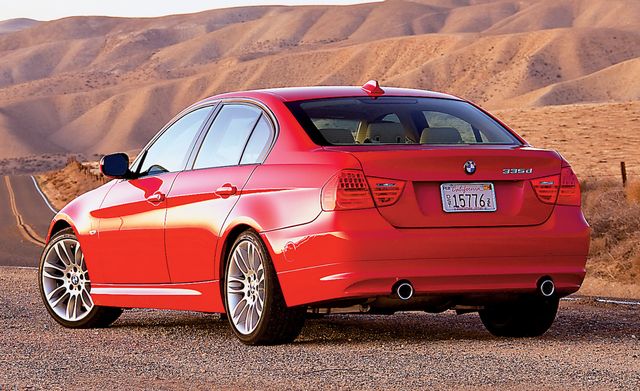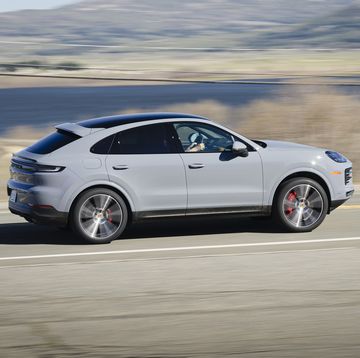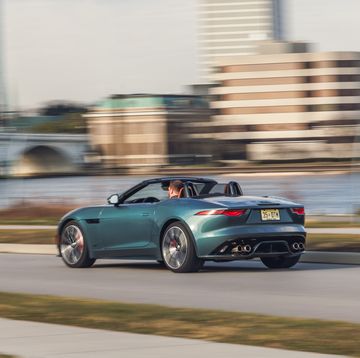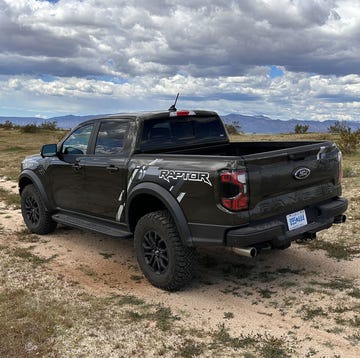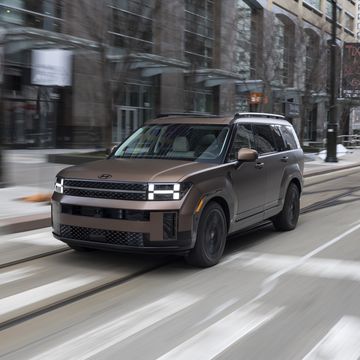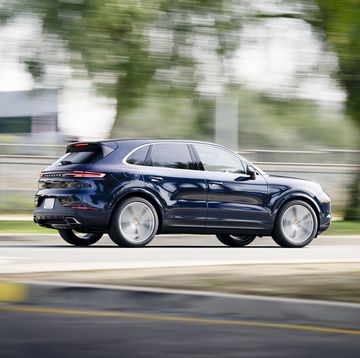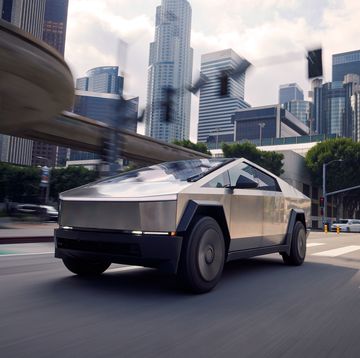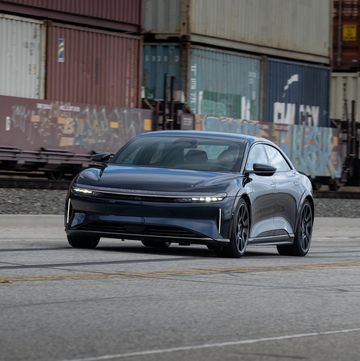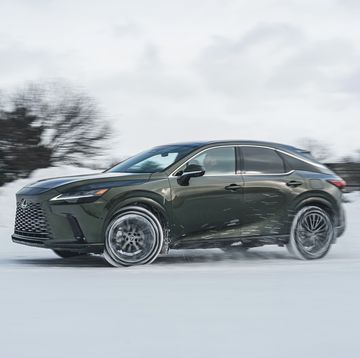So here's BMW's first diesel offering in the U.S. in almost a quarter-century. But as you survey the tempting array of 3-series cars, you may be asking, so what? Why should I care about this oil burner?
It's not because you're gonna save a bundle on fuel. Check our statistical sidebar. Yes, the 335d has better EPA fuel-economy ratings (23 city, 36 highway, 27 combined) than either of the 3-series gasoline burners. A 328i automatic is expected to achieve 18/28/22, and the 335i is rated at 17/26/20. But at this writing, ultra-low-sulfur diesel fuel (now the nationwide standard) costs about 15 percent more per gallon than premium gasoline.
Factor in the higher cost of the car. With a base price of $44,725, the 335d is the most expensive non-M member of the 3-series, and the math gets worse. The feds will give you a $900 tax credit on this diesel, but even so, you're looking at a $1575 disparity between a 335d and a 335i automatic.
So the answer isn't savings. The answer lies in what you value as a driver.
If it's high revs, peak ponies, and zero to 60 in under five seconds, you probably need a 335i.
Automatically Diesel
Unlike other 3-series BMWs, the 335d's only gearbox is a six-speed automatic. Attention letter writers: We're aware that our test car's options don't match those of the photo car.
But if you value torque (and who among us does not?), the 335d generates enough to affect the rotation of the earth: 425 pound-feet at 1750 rpm. That's 125 pound-feet more than the 335i's gasoline turbo six. More perspective: The Dodge Ram's 5.7-liter Hemi V-8 churns up just 407 pound-feet. The Ram, you'll recall, is a truck. Torque and trucks go together like pizza and beer.
But what the hell is torque? Here's a definition from Webster's: a measure of the tendency of a force to cause rotation, equal to the force multiplied by the perpendicular distance between the line of action of the force and the center of rotation.
Did that help? No? How about this: Torque is the low-end muscle that gets you out of the blocks when the light turns green. It's the thrust that squashes you into the seat when you hammer the gas. Torque is the power commodity you tap into every day, especially in urban commuting. Torque is good. Torque is your friend.
And torque is what gives the 335d its own unique place in the 3-series lineup.
The 335d's torque generator is a turbocharged and intercooled, DOHC 24-valve 3.0-liter all-aluminum inline-six. We've seen this engine in the Euro-spec 330d [September 2006]. That version of the engine, still in the BMW inventory, got its boost from a variable-geometry Garrett turbo, churning up 228 horsepower and 369 pound-feet of torque. Not bad, and thriftier, too: 44 mpg on the Euro combined cycle, 38 mpg in our test. (Our 335d logged 28 mpg.)
Nevertheless, when you're dissecting traffic in a 3800-pound sedan (diesels are invariably heavier than their gasoline counterparts), you want as many pound-feet as you can muster. The 335 version of the engine gets its extra thrust via a BorgWarner sequential twin-turbo arrangement. The word twin is misleading because the two turbos are different sizes. The smaller one begins delivering boost almost off idle but maxes quickly, at about 2000 rpm, whereupon its bigger companion is spooled up.
The system's maximum boost is 26.8 psi, compared with 22.6 for the variable-
geometry version, and of course the output is significantly higher: 425 pound-feet max, over a curve that's as flat as Mount Clemens, Michigan (which is exactly as mountainous as a billiard table), 80 percent of the engine's prodigious production of pound-feet twisting away anywhere from 1100 rpm to 4200 rpm.
And let us not forget the more widely understood power rating. Like all diesels, this engine’s strong suit is torque, but there’s respectable horsepower, too—265, compared with 300 for the 335i. That’s not much of a difference, but the character of the two engines is as different as Jekyll is from Hyde. The 335i’s 3.0-liter turbo six is at its best operating near its 5800-rpm power peak. The diesel’s horsepower peak, in contrast, is 4200 rpm. Above that, it quickly runs out of wind.
While the 335i affords two transmission choices—a six-speed automatic and a six-speed manual (standard)—the 335d comes with a six-speed auto, period. And in base form, it’s a conventional automatic—no steering-wheel shift buttons or paddles. It does allow the driver to make manual selections with the shift lever, but that isn’t very satisfying. You can get paddles with the optional sport steering wheel ($100), but that’s redundant. Touch the throttle, and that tidal wave of torque thrusts the 335d forward like a barrel going over Niagara. No point in fooling with the shifter. Just click it into D and forget about it.
Though the 335d possesses all the dynamic virtues that have made the 3-series a C/D 10Best winner 18 years running—precise steering, eager responses, supple ride—its driving style is distinctly different. In terms of powertrain, think 1956 Buick Roadmaster. To purists, this is heresy. But to guys out there fighting the stoplight wars, the 335d’s massive punch is very appealing.
You may wonder, with all this launch muscle on tap, why the 335d isn’t any quicker than it is. A 335i is capable of sprinting to 60 mph in fewer than five seconds. The 335d gets there in a little less than six—5.7 seconds for our test car. But check the gearing. The six speeds in the automatic are the same for both 335i and 335d, but the 335i’s rear diff is 3.46:1 versus the 335d’s much taller 2.81:1. At 80 mph, the diesel is turning at about 2000 rpm.
Besides diesel fuel—the exhaust is clean, but the liquid smells bad, and the pump price really stinks—there are a couple of other 335d downsides. For one, this car isn’t as quiet as its gasoline counterparts, particularly when cold. For another, there’s the urea injection deal.
Urea Factor
Urea fluid helps the 335d meet 50-state emissions. Filler ports (above) are in the left rear bumper.
The 335d comes with a 5.4-gallon load of an engine additive called urea, sold under the AdBlue label. Urea is a synthetically produced, water-based solution rich in nitrogen. When injected into a selective catalytic reduction (SCR) catalyst, it releases ammonia, and that reacts with exhaust gases to reduce oxides of nitrogen (NOx) emissions to levels required for 50-state compliance. Urea should cost about $10 a gallon and is not an option—if the reservoir runs dry, the car will continue running but cannot be restarted without a refill. BMW says a tank of the stuff will last 12,000 to 15,000 miles, likely to be replenished during regular service visits, covered for 4 years/50,000 miles. A dash light warns when the supply is half depleted.
Urea does represent a hassle and a minor expense. On the other hand, you never have to replace spark plugs in a diesel—the dealer charges $34 each for a 335i. And remember—torque will set you free.
K.C. COLWELL
The “efficient” 3-series doesn’t need to be this powerful. But you won’t hear me complaining about the invigorating thrust, only the lack of a manual transmission. Americans like powerful engines. Kudos to BMW for giving Americans what it thinks we want instead of what it knows we need. Soon enough, the U.S. customer will require a smaller, more efficient diesel. But until then, I will enjoy every moment of the bolt-shearing torque provided by the sledgehammer of BMW diesels.
DAVE VANDERWERP
These red-blooded pages have routinely suggested that more power is unequivocally better. But for me, the 335d is orbiting awfully close to excessive. There’s so much torque that the manual-transmission option was ditched. Toeing into the throttle in a wet parking lot results in socially unacceptable levels of wheelspin. And 425 pound-feet of torque is not your friend in a snowstorm. The 335d is the smoothest, most responsive, and quickest diesel vehicle I’ve ever driven. It’s also entirely too much.
